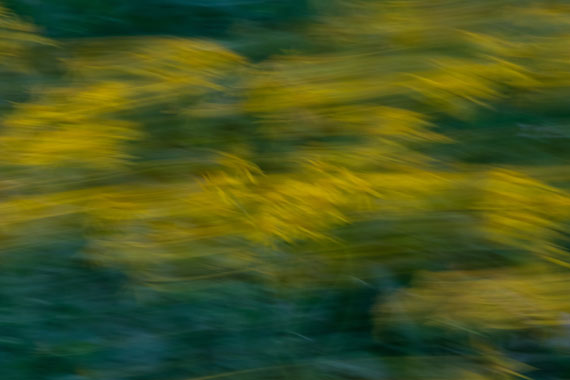Ever since I started taking photographs about 30 years ago, capturing the sense of movement to create abstract images has been a passion of mine, and when I discovered ICM, a whole new world of photography opened up for me.
Intentional Camera Movement is the when the camera is moved in horizontal, vertical, diagonal, or random directions while the shutter is open. The resulting image is deliberately blurred and often abstract.

Photo captured by Suzanne Walker; f/25, 0.3s, ISO 200
ICM images are not what most people think of as traditional photographs. I describe it to people as “painting with my camera,” because my images are painterly and impressionistic. Others can be more abstract.
Each photographer finds their own process and develops their own style and signature—this is true for all photographers and for those who employ ICM in their work, thus, I offer these tips and techniques aware of our individual approaches to photography. As a photographer interested in ICM, you need to find your own way through the inspiration of others and develop your own style.
Tripod
Using a tripod is the best way to introduce yourself to deliberate camera movement. It’s an invaluable tool to start with by employing long sweeps from right to left and left to right in 2–3 second exposures under low light conditions. You need to be under low light conditions or use neutral density filters to allow you to shoot in daylight. Study your EXIF data after you’ve discovered what you like in your work; it will give you important information about how to set your shutter speed and aperture to achieve the look you’re going for in your photographs.
Shutter Speed
Shutter speed is probably the most important element to control what you want in your photos. I prefer, for my own work, to work between 1/20 and 1/5 of a second. In order to accomplish good results at these fairly fast slow shutter speeds, you need to move the camera very quickly with a strong follow through and camera set on “continuous shoot.” In daylight, setting your camera at its lowest ISO and closing your aperture down will help you get the shutter speed that works for you. I prefer to use aperture priority or bulb mode on my camera to achieve the slower shutter speed, because I’ve found that shutter speed priority will vary as the camera is moved particularly around light and dark areas in the subject matter.
Choosing Your Images
When it comes to choosing your best ICM images, it’s subjective, like all art. However, here are some guidelines to help you see beyond the initial photograph before you delete it! When you choose your images, certain interrelationships within the image you’ll want and others you won’t.
For example, the balance of colors, gradations and tonality— lightness to darkness within the image—will improve your photograph. Looking closely at your photo to find the image within the image is a great skill to develop because you can take an okay image and make it better through cropping—other images just cannot be improved. Interrelationships between light and dark, the “heaviness” in color or darkness needs to be balanced in an image. You do not want an image that is too dark or heavy on one side but rather, is equally weighted visually.
Layers of colors and tones need to be balanced, too. For example, a heavy layer at the top of an image that takes up 2/3 of the space with several smaller layers at the bottom of the image is not the best option because it’s not as pleasing to the eye. Cropping that layer to balance the bottom of the image is an option to consider.
Conclusion
Finally, experiment, experiment, experiment! Find inspiration in photographers you admire who take ICM images and have fun with it—play!! Experimenting with ICM will help you, as a photographer, find your own style, your own way of working with this approach to photography—you don’t want to copy another photographer, but be inspired by them!
If ICM is for you, you will find that your passion for it will grow daily and you’ll need several memory cards because this technique takes up a lot of space!
About the Author:
Article written by Hilary Anne Stephens Photography.
- - - - - - - - - - - - - - - - - - - - - - - - - - - - - - - - - - - - - - - - - - - - - - - - - - - - - - - - - - - - - - - - - - - - - - - - - -
The post Painting with Light: Intentional Camera Movement appeared first on PictureCorrect.
from PictureCorrect https://ift.tt/OExWwTv
via IFTTT






0 kommenttia:
Lähetä kommentti